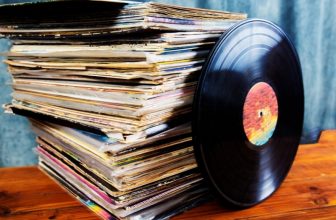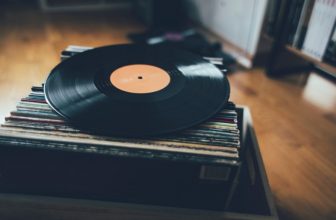The History of Vinyl Records
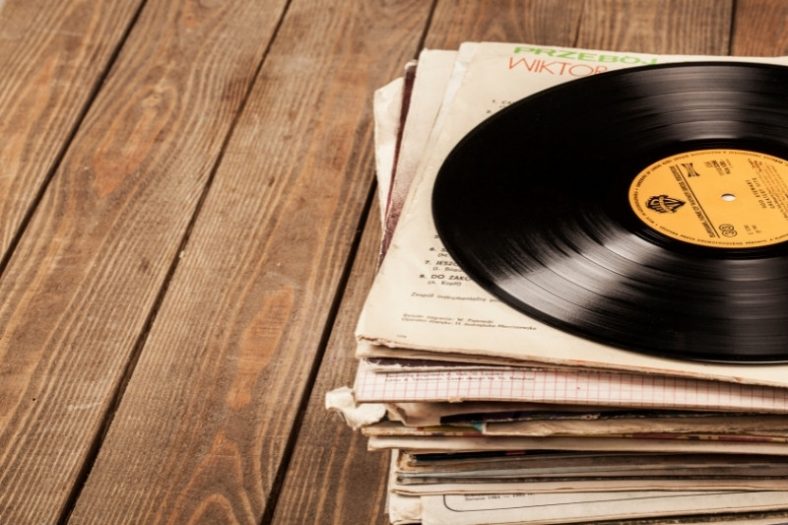
The first vinyl records appeared in the 1940s, replacing the shellac record. The vinyl record was the most popular sound storage medium in the world for decades, but it’s now mainly used by audiophiles, collectors, and DJs. There are many types of vinyl records, depending on their size and speed.
The history of the record, a sound storage medium shaped like a flat disc, started years before the vinyl record, a record made out of polyvinyl chloride. But the early vinyl revolution and its subsequent comebacks have shaped the history of music in a way no other sound storage medium did.
Because vinyl records continue to be a part of the music industry today, it’s important to look back at where they came from, why they are so popular, how their popularity changed over the years, and why they continue to be so valuable to music artists and fans alike.
Contents
The origins of the Vinyl record
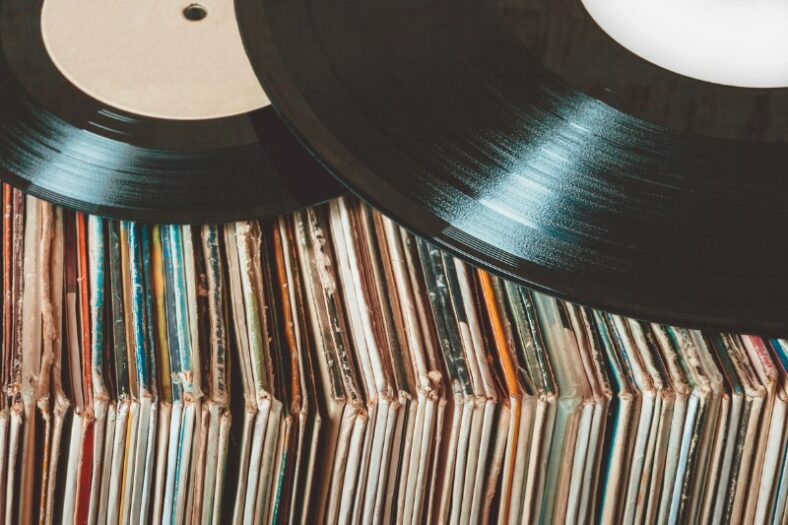
Even though the record was first mass-produced in the United States, its earliest predecessor (the phonautograph) was invented in the city of Paris. Inspired by the photograph, the French inventor Édouard-Léon Scott de Martinville created a device that could record but not reproduce sound.
It was only in 1877, back when Thomas Edison came up with the phonograph, that the first recording device that could reproduce sound came into the scene. Edison’s cylinder phonographs, however, were considered outdated a few decades later (around 1910) when the RCA Victor 7-inch record became the standard. The 7-inch record looked pretty much like modern-day vinyl records and was shaped like a flat disc.
RCA Victor and the Radio Era
Also known as the Victor Talking Machine Company, RCA Victor was the American company that most influenced the popularization and development of the record. Back when records were still made out of shellac, Victor invested in the then-new electrical method of recording to keep up with popular demand.
Such demand was mainly caused by the advent of the radio in the 1920s. As more and more people tuned in to their home entertainment devices, it was clear that there was a newfound need for more and better-recorded songs. The microphone was the technology that made it possible for records to be created more quickly and with a greater level of fidelity.
The American recording industry, fueled by RCA Victor and its Columbia Records competitors, boomed throughout the 1920s before falling drastically in the 1930s (the Great Depression was to blame). Despite the economic turmoil that shook the United States, both Victor and Columbia managed to survive a decade-long period of near-bankruptcy.
The LP and other innovations
Without predicting the consequences of the Great Depression, RCA Victor and Columbia Records pioneered the long-playing record (LP) format in the early 1930s. At the time, most commercially-available records rotated at 78 rotations per minute (rpm). First came the 33⅓ rpm record that measured 12 inches in diameter, but it wasn’t until 1949 that Victor released the first 45 rpm single (7 inches in diameter) called the “extended play”.
It was around the same time that the switch from shellac to vinyl finally happened. Such a change was motivated by the scarcity of shellac supplies caused by World War II.
Throughout the 1940s, Victor and Columbia Records continued to dominate the music market. Victor was known for its mass-produced 7-inch singles, while Columbia was known for its microgroove-record LPs (generally featuring classical pieces). Both were more advanced than ever at the time, mainly due to new groove-cutting technical possibilities.
With more grooves (the lines in the record where the needle is placed) per inch, Victor and Columbia saw their sales rise to up to 200 million by the 1950s. One decade later, the music market was booming and the vinyl record had been established as the most popular sound storage medium in the world.
The golden era of the Vinyl record
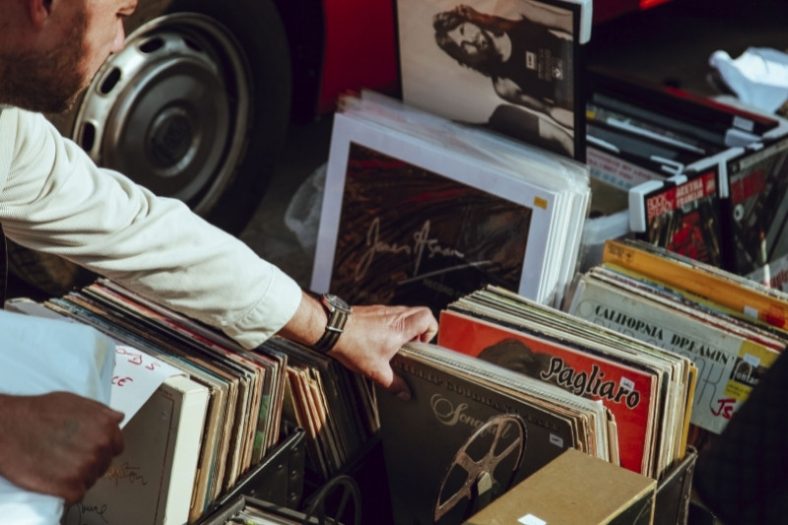
From the 1950s until the early 1980s, vinyl records were booming. Even though new changes were made to the sound storage medium and new recording formats were introduced, it was impossible to deny the abrasive popularity of the vinyl singles and LPs that sold by the million in the United States.
Vinyl record sales started being reported by Billboard magazine in 1945 and were heavily impacted not only by the United States period of economic growth in the 1950s but also by the arrival of the first large-scale pop-music phenomenons – artists such as Elvis Presley and The Beatles.
Even though 7-inch singles have historically been the most popular type of vinyl record, the LP was also extremely popular from the 1960s onwards. The sheer existence of this format possibly inspired major artists to invest in the creation of conceptual, immersive albums in which each song played its part in a larger, more ambitious creative vision. This notion wasn’t around (or was at the very least less prevalent) during the 1950s.
The rise of the CD
The CD was the first alternative sound storage medium that gave vinyl records a run for their money. In 1986, “Brothers in Arms,” by Dire Straits, became the first CD to sell one million copies. At the time, the CD was already considered to be the dominating music format, putting an end to the vinyl record’s decades-long run at the top and even surpassing the all-popular cassette tapes.
The CD was quick to replace the vinyl record at the top because it offered better sound quality, more playing time, and more durability. Even though the CD is technically superior to vinyl, the vinyl versus CD debate continues to generate controversy today.
In 1999, the music-selling industry as a whole (i.e., all formats of record music) peaked when worldwide sales hit a staggering $40 billion. It would all change drastically in the following decade, though, as the digital audio file came into the scene.
Recorded music goes digital
It’s no secret that the rise of the digital audio file has caused physical music sales to plummet since the start of the millennium. Gwen Stefani’s “Hollaback Girl” became the first single to hit one million downloads in 2005, a mere six years after CD sales peaked.
But the digital audio file was more than the new format that would replace the CD: it conveyed a new way of listening to music, and it arguably put a definitive end to the booming music-selling industry that existed throughout the 20th century.
More than the possibility of buying music from home and directly from the computer, it was online piracy that fueled the music-sales drop that followed the introduction of the digital audio file. People were listening to more and more music, but they were buying less and less. Apart from a few notable exceptions, most artists started relying on live shows (rather than record sales) to make a living.
At this point, it looked as though there was no future for the vinyl record. Against all odds, however, the classic format was kept in circulation and made a striking comeback in the age of streaming.
The Vinyl comeback and the age of streaming
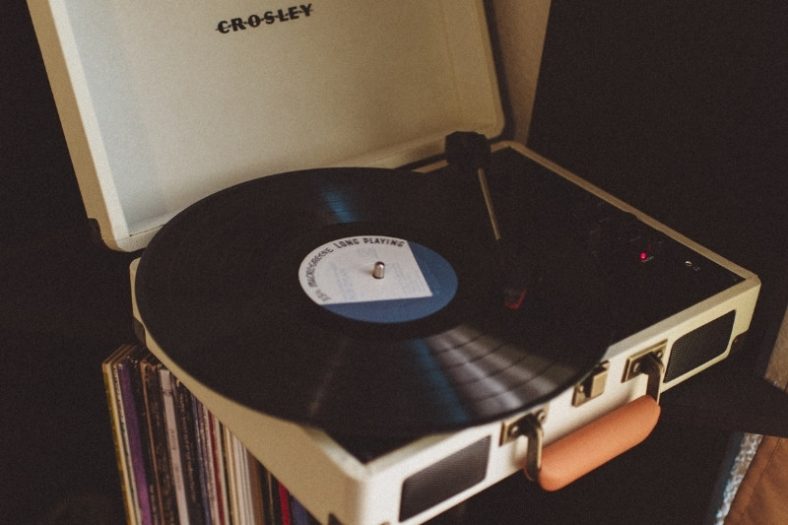
Considered to be outdated since the early 1980s, vinyl records were once the stuff of antiquity shops and odd collectors. But from 2007 onward, vinyl record sales say a resurgence and started rising again, fueled by separate communities of audiophiles, collectors, artists, and DJs. At a time when digital audio was king, some music fans felt a dire need of reconnecting with a musical object.
The chosen object was not the CD, the most-recent major physical audio format, but the much more charming vinyl. Despite the inconveniences of owning a turntable and taking care of the records, the vinyl record reappeared as the number-one sound storage medium for people who were really into music. In other words, vinyl records became cool, trendy, and a symbol of status.
As the digital audio download itself has almost been rendered useless by increasingly popular music streaming services such as Spotify and Apple Music, the vinyl record continues to show some progress. In 2022, for example, vinyl record sales soared by 22%. Even though people still buy CDs, it’s fair to say that the vinyl record is now most people’s favorite physical sound storage medium.
FAQs (Frequently Asked Questions)
When was the first ever Vinyl record made?
The first vinyl record was made available in 1948. It was invented by the American-Hungarian engineer Peter Carl Goldmark, employed by Columbia Records at the time.
When did Vinyl records first become popular?
The flat-disc-style record was the world’s most popular music recording format for decades before the introduction of the vinyl record. For that reason, vinyl records first became popular the same year they were introduced into the market (1948).
What was the first song on Vinyl?
According to the catalog of Columbia Records, the first song on vinyl was titled “Caligo Rag.” It was released by Al Dexter in 1948 and featured a B-side, titled “Rose of Mexico.”
Why is Vinyl called wax?
Wax is a slang term often used to reference vinyl records. It most likely comes from the pre-vinyl days (before the 1940s), back when big wax cylinders were used as master discs, i.e., equipment to engrave the grooves in the record. These early wax master discs were eventually replaced by discs made of a harder lacquer.
What do the numbers on a Vinyl record mean?
The numbers 33, 45, and 78 (usually followed by rpm) refer to the speed at which the record rotates. You can learn more about it in this article. Vinyl records also tend to feature a catalog number, which is merely an identification number (like a “barcode” or collectible number) assigned by the record label or artist.
How can you tell if a record is first pressing?
To determine if a record is first pressing, you should inspect it very closely. Look for exact clues by searching the record’s barcode, catalog number, and edition on the Internet (Discogs is a great database for discovering first pressings).
It may also be useful to consult the credits to see the name of the mastering engineer, as later pressings often feature a different mastering engineer.
How do you tell how old a Vinyl record is?
Fortunately, most vinyl records include information about the record’s release either on the back cover, the inside sleeve, or the label in the middle of the disc.
If there’s no available information on the record, consult online databases to determine when the record was released or ask for the help of a professional (record store owner, audiophile, music collector, and so forth).
Conclusion
Whether you’re a CD fan, a cassette aficionado, or just into streaming music online, it’s impossible to deny that the vinyl record was, and strives to continue to be, the most influential audio storage medium in the history of music.
A charming object that’s been on the shelves of millions of music buffs since the late 1940s, the vinyl record continues to make comeback after comeback even in today’s saturated music market, proving to everyone that it’s still worth it to invest in a physical music collection.


